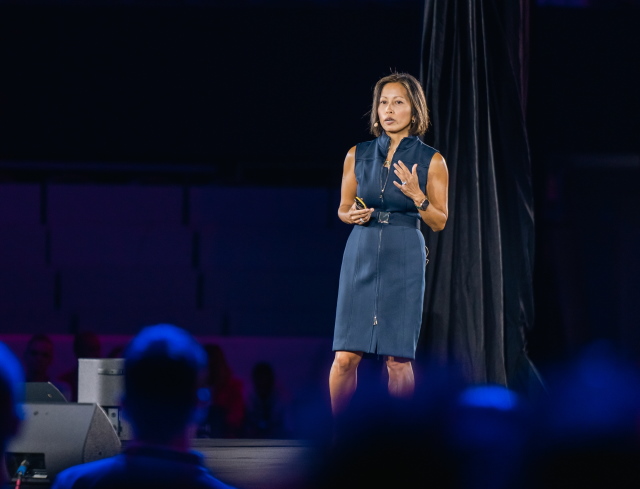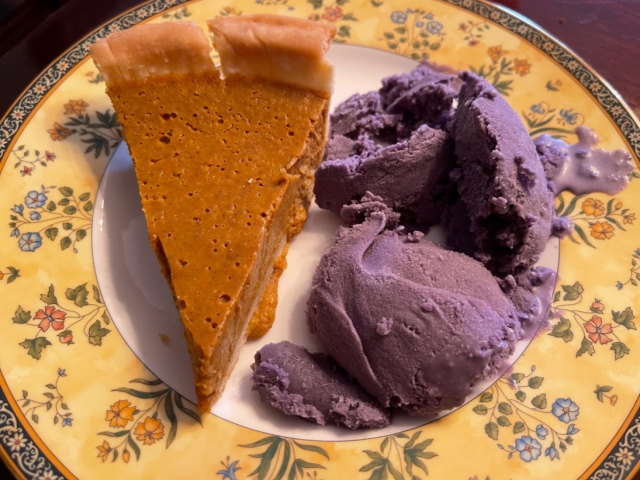2022-November-2
Did you know? You can share this story using the social media icons on the upper left. Use the hashtag #WeAreCisco. You can also rate or comment on the story below.
Breaking the Bamboo Ceiling
BY GRACE FRANCISCO · VP DEVELOPER RELATIONS STRATEGY AND EXPERIENCE · UNITED STATES
4 MINUTE READ · 6 MINUTE LISTEN
October was Filipino American History Month.
Maybe you haven't heard of it before. I’m Filipino American, yet I only learned of it a few years ago. It was first declared by Congress in October 2009.
Filipino sailors were the first Asians to step foot onto what would become the United States when they first landed in what is now Morro Bay, California, way back in 1587.

Today, Filipinos are the second largest Asian community in the U.S. The size of the community amazes me partly because I spent much of my life with little experience being with other Filipino Americans.
My parents weren't terribly social, but even as an independent adult, I rarely came across other Filipinos at work in tech. This, in turn, was reflective of my social circles.
I start with this context to reflect on how, despite many odds, I have navigated my career:
- Filipinos are an underrepresented minority. We often go unrecognized and blanketed under the massive category of Asian Americans. Only 6% of executives are Asian.
- I am often the only woman on the many technical teams I serve on. Current statistics show that only 24% of technical jobs are held by women. An improvement of 6% over the last decade.
- The stereotypical exec is often seen as a tall, white male. In 2017 Fortune published that seven in 10 senior executives were white men in Fortune 500 companies. I am petite and dark skinned.
I am uniquely me, refusing to follow the crowds or fit in.
As part of an immigrant family, there wasn’t much of a social network for me to rely on. On top of a challenging family environment, being on my own at an early age was a frightening time for me.
My focus then was to not just survive but succeed despite my starting point.
Growing up, there was a cultural expectation to either become a nurse or a housewife. Neither of those appealed to me, knowing that my academic success indicated a potential future of many opportunities.
While I had pressure to go down a traditional path, my mother spoke frankly with me one day. She was not someone who spoke much, so it was a big deal when she advised that I should never be a stay-at-home wife.
She wanted me to be happy and have independence.
I'm thankful I followed my own unique path — one I've been talking about recently at events like InfoBip Shift and Grace Hopper.
I haven't always had a lot of support along the way, but where I found it in bits and pieces, I was grateful.
That included my fifth-grade teacher, who was my lifeline year after year in our Christmas card exchanges. Or a tennis teacher in the National Junior Tennis League who believed in me enough to hire me at 16 as one of their youngest teachers.
I went on and worked my way through college off and on for the next 10 years.
The heart of Filipino culture
During Filipino American History Month, I was reminded how thankful I was for the opportunity to become a U.S. citizen in my early 20s and help my own mother and sister, who is mentally disabled, also become naturalized.
I think about my mom a lot when I think about being Filipino American. She sacrificed a lot bringing us here.
My mom was a well-respected college home economics teacher in the Philippines. She gave that up and worked part time in public schools serving lunches to little kids.
I have gratitude for my mother’s courage to take her four kids on a plane to escape the Marcos regime.
Being Filipino, the first rule is to always have more than enough food for everyone who enters your home. We often enjoyed the smell of baked ensaïmadas, traditional Filipino pastries, wafting through the house.
Food is at the heart of Filipino culture and part of my mother’s love language.
While I don’t have as much time to bake as I’d like, I often make my version of chicken adobo (a type of Filipino chicken stew) with coconut in the vinegar base for weeknight dinners.
The varied experiences I've had and the grit I applied in every challenging situation have served me well. They brought me to where I am now as Vice President of Developer Relations Strategy and Experience at Cisco.
There was certainly a lot of hard work along the way, as well as some tears and struggles. But there was lots of learning.
I’m grateful that I’ve found a path through the Bamboo Ceiling for myself. I hope my story can help others break through barriers too.
I am proud to be Filipino American and part of the Cisco family, who embraces and supports diversity in all its forms.
Employee Resources
- Filipino Professional Network
- The Bamboo Ceiling
- Employee and Family Assistance Program
- Join an Inclusive Community
- Learning and Development
- Share your story
Connect everything. Innovate everywhere. Benefit everyone.


Share your thoughts!
Log in to rate and commentShare your thoughts on the story here!